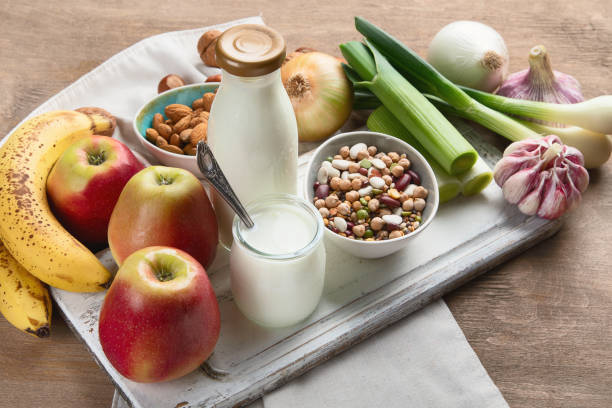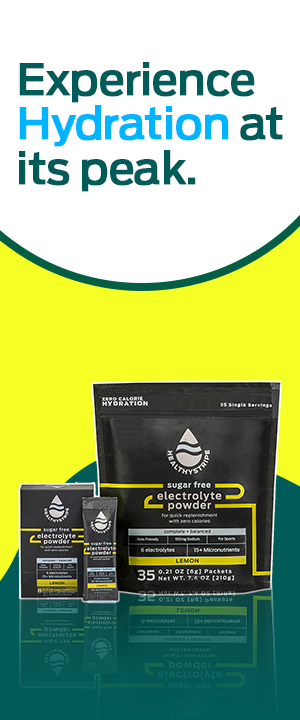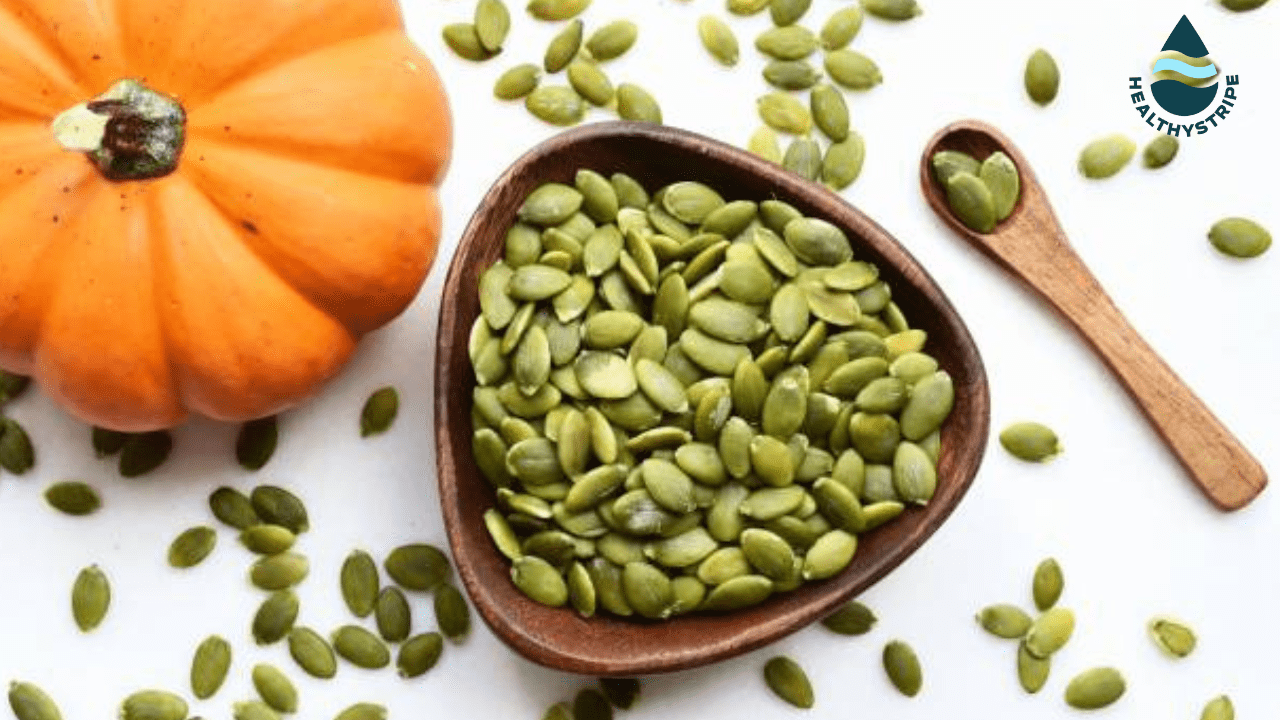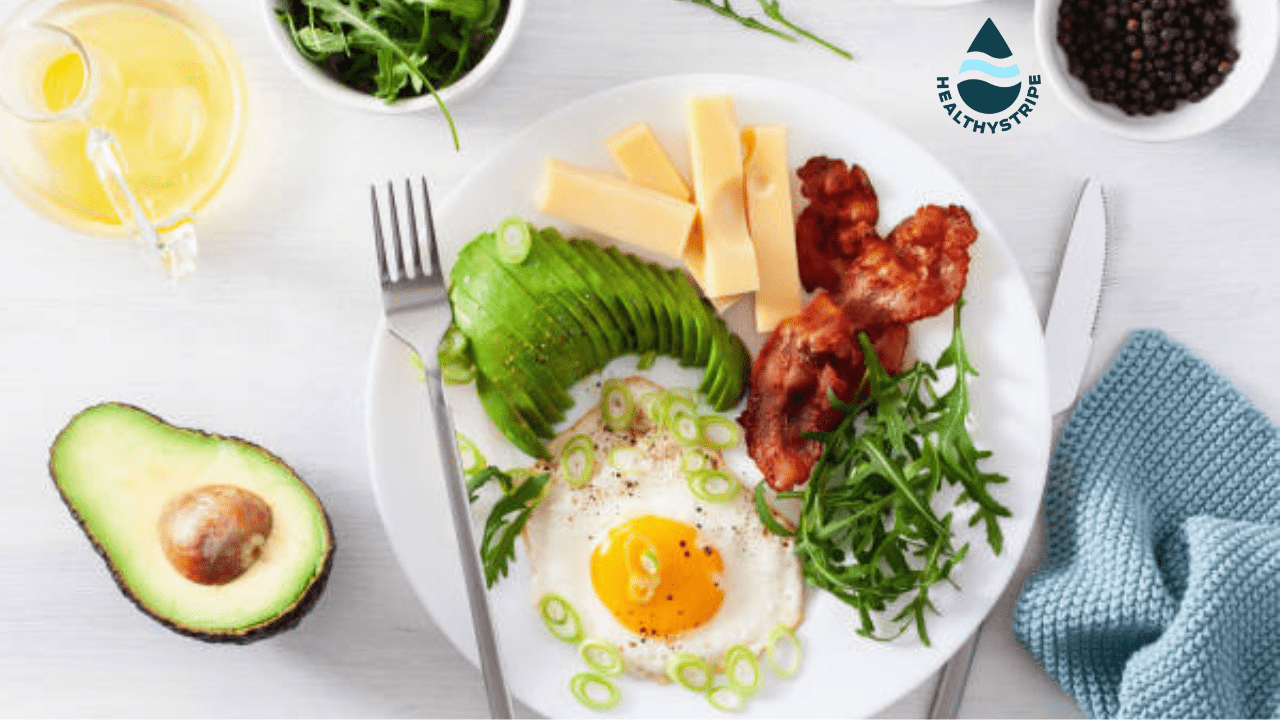Prebiotics food: Top 30 foods, Benefits and Major Differences Prebiotics vs. Probiotics

Have you ever imagined something that could make your healthy gut bacteria dance? If yes, prebiotics are the most suitable choice for you!
Knowledge about essential food elements and components of diet is an essential participant to leading a healthy life. In magazines, health articles, and through doctors, we hear the terms of prebiotics and probiotics. You may wonder what prebiotics and probiotics are and what’s the difference between them. Prebiotics are the food for bacteria in our gut, while probiotics are helpful bacteria important for our digestive system.
Prebiotics and probiotics maintain bacterial balance in the gut, as mentioned in an article in the Journal of Clinical Gastroenterology and Hepatology in 2019. In this blog, we will discuss what prebiotics are, their types and mechanisms of action, and their sources.
Let’s get straight into it!
What are Prebiotics?
Prebiotics are the food items that promote the growth of beneficial microorganisms living in the intestines, acting as food for them. A food science article written in 2010 called it a selective ingredient of diet that changes gut flora, giving benefits for health.
The lining of your gastrointestinal tract has tiny microscopic organisms and bacteria. They create a friendly environment called a microbiome that is not detected by your immune system as a danger. These bacteria as a cost of living help you digest certain foods and take their nutrients. This ultimately promotes your overall health and prevents you from heart and kidney diseases. Prebiotics and probiotics both play a role in maintaining health together. Disturbance in the functioning of these bacteria leads to conditions like irritable bowel syndrome and Crohn’s disease.
Prebiotics are plant-based fibers usually obtained from vegetables and fruits containing complex starches. They are not digestible, so they pass the gut unbothered to the colon, where our colonizer friends ferment them into different short-chain fatty acids. These are taken up by colon cells and aid in reducing inflammation and improving immunity.
What are the types of Prebiotics?
There are many types of prebiotics. Most of them belong to carbohydrate groups, which mostly are oligosaccharides. They are found in various foods based on plants containing fibers like bananas, onion, garlic, grains, legumes, etc. They have a beneficial role in gut health. Furthermore, prebiotics also help in calcium absorption and heart and nervous system health.
However, moderation is the key to every balance. An excess of prebiotics in your diet can have minor symptoms like gas and bloating, particularly when you add a new item to your food.
The following are the types of prebiotics:
- Fructans
Fructans include oligofructose, inulins, and fructo-oligosaccharides. They have terminal glucose units linked via β-linkage. They are found in garlic, onion, and asparagus. Fructans modulate the immune system in the body and strengthen your body’s defense system.
- Galacto-oligosaccharides
These are plant sugars that can greatly stimulate Bifidobacteria and Lactobacilli. These are fancy names of some bacteria in your colon. These prebiotics are present in beans, chickpeas, root vegetables, lentils, and dairy products.
- Starch derived Oligosaccharides
It includes resistant starches that are not digested in the upper gut and travel down to become food for bacteria. They produce a high amount of butyrate.
- Pectic Oligosaccharides
These are new classes of prebiotics that possess antioxidant properties. They promote the growth of intestinal microflora, kill pathogens in foods, and lower total cholesterol levels. Pectic oligosaccharides have anti-inflammatory properties to resolve inflammation in the gut.
What are the Sources of Prebiotics?
A study conducted in 2020 used plant-based powders to study their prebiotic potential. The results were conclusive enough to support the potential of these extracts of plants like flowers and bananas to support the growth of bacteria in the lab. They also inhibit the growth of harmful bacteria that can result in disease risk.
The daily recommended dosage for prebiotics is 2.5 to 10 grams for their beneficial effects on human health. Most market products have a dose of 1.5 to 5 grams. Obtaining prebiotics from a natural diet is recommended. While starting a diet containing probiotics, it is advisable to start with a small dose, say a quarter of the serving, and gradually increase the portion of the food.
- Bananas
One of the most readily and easily available fruits is bananas. It is one of the most efficient routes of prebiotic intake. They are cost-friendly and convenient to eat. Banana contains fiber as well as a type of prebiotic called inulin, which helps in the growth of good bacteria in your gut. However, in an article in a journal called Anaerobes, it was said that regular consumption of bananas was beneficial for microbiota health in the gut.
- Barley
Barley is a fiber-rich grain available in kitchens. It can be used in the form of flour or porridge. This high-in protein and fiber grain with a mild taste can be used in any recipe. It has a great prebiotic potential. A study published in 2021 supported that the Beta-glucan in barley contains very high prebiotic potential and is an efficient food stabilizing and emulsifying agent. According to US agriculture studies, about 80 grams of cooked barley has 3 grams of fiber.
- Garlic
One of the most commonly used food items in the market. It is a great prebiotic source, as 3 grams of garlic has 0.1 grams of fiber. Garlic has large sugar molecules. When broken down into smaller ones, they become a source of prebiotics, according to a study published in 2022 in Current Research in Food Sciences. It also contains fructans, a key factor in promoting gut microbiota’s health.
The strong smell of garlic should not keep you from using it.
- Potato
Potatoes have fiber both in the flesh and skin. One cooked potato contains 2.4 grams of fiber. Potatoes have resistant starch, which stimulates the growth of useful bacteria, reducing gut health problems. A study in 2023 published in Nutrients showed that daily consumption of 3.5 grams of resistant starch provided prebiotic effects.
- Artichoke
This might not be a famous vegetable, but considering the sources of prebiotics, it is a good source as it has inulin in it. About 150 grams of artichoke contains 2.4 grams of fiber, which helps pass the stool easily without straining. Inulin promotes beneficial gut bacteria. Inulin ferments in the gut and provides prebiotic effects, as studied in a study published in 2018 in Current Developments in Nutrition.
- Oats
Oats are one of the famous kitchens that use grain. They are rich in beta-glucans like barley and high in fiber. About 40 grams of oats provide 4 grams of fiber.
- Legumes
Other famous members of the grain family, including chickpeas, black beans, and lentils, make this group. The prebiotics in them are known as galacto-oligosaccharides. These are fermented by gut flora and can produce gas, causing bloating and flatulence. About 100 grams of legumes contain 8 grams of fiber.
What is the Mechanism of Probiotics?
Prebiotics are the energy source for the gut microbiome. These are mostly starch and fibers composed of complex carbohydrates that are not broken down anywhere in the gut due to their large size and travel down to the colon and become food for these bacteria. There are many types of organisms residing in the gut. Larger chains broken down by some bacteria act as food for other bacteria.
This mechanism blows your mind as to how we could have bacteria working for us, but they are the ones responsible for the acidic pH of the colon. The process is called fermentation and the products formed are mostly acidic.
The Top 30 Prebiotics Foods for a Healthy Gut
Prebiotics are obtained from natural food as well as supplements. Generally, they are plant-based fiber. Many food items used in making a meal contain prebiotics. You can also add special supplements to your diet, particularly for prebiotic intake. Mostly, the foods containing fermentable soluble fibers are the ones high in prebiotics. Cooking food can reduce the number of available prebiotics because food composition changes based on how you cook it and not cook it. There are many kinds of prebiotics, but the most common are found in resistant starches, inulin, and pectin.
- Legumes
- whole grain wheat
- whole grain rye
- whole grain corn
- Beans
- peas
- Oats
- Bananas
- Berries
- Jerusalem artichokes
- Asparagus
- Dandelion greens
- Garlic
- Leeks
- Onions
- Chicory root
- Barley
- Apples
- Konjac root
- Cocoa
- Burdock root
- Flaxseeds
- Jicama
- Wheat bran
- Seaweed
- Honey
- Eggplant
- Flaxseeds
- Cabbage
- Almonds
- Fruits like persimmons, pomegranate, grapefruit, dry fruits, white peaches, watermelon
The Surprising Benefits of Prebiotics:
Prebiotics’ effects on health and protection against diseases are admitted in various research conducted. Not only do they provide protective benefits to our gut, but also to our nervous system, immune system, and cardiovascular system.
- Gut Health
Prebiotics can keep your digestive system healthy by supporting good bacteria in your colon and helping get rid of pathogens. Prebiotics are plant-based fibers that help with constipation. Prebiotics have also proved beneficial for people with git diseases like irritable bowel syndrome and Crohn’s disease. Studies have shown that prebiotics fermented products could help protect against colorectal cancer, the third most common malignancy worldwide. Their overall role in improving gut motility and, ultimately, gastric emptying is associated with many health benefits.
- Immune Functions
Your food influences your immune functions. A good balance of food components helps balance the risks of infections and allergies. Prebiotics contribute to immune function by increasing the number of protective microorganisms. They also wash off harmful bacteria like Salmonella. Prebiotics play a part in diarrhoea-associated disease. Clinical trials have studied their effectiveness in reducing the infection duration.
- Prevent Allergies
Many organisms entering the gut risk for eczema can be reduced by prebiotics by preventing the allergic response development and strengthening the immune system.
- Strong Bones
Having strong bones is key to a healthy life. Research suggests the role of prebiotics in calcium absorption in the gut. Healthy bones reduce the risk of fractures and osteoporosis.
- Heart and Vessels Health
A leading cause of death in the USA is cardiovascular diseases; statistics showed 30 percent of deaths in 2013 were due to heart-related conditions. People have poor eating habits and a cumbersome lifestyle. Research shows the role of fibers and prebiotics in the prevention of the risk of heart-related diseases by decreasing the inflammatory elements in the blood.
- Improves nervous system
The betterment of nervous system health includes prebiotics as a participant. It includes a reduction in the levels of stress hormones in the blood, improvement of memory, learning, and regulating mood.
- Blood Lipids Levels
The effects of prebiotics and fiber intake in reducing fat production by your liver have been studied. This ultimately reduces blood lipid levels.
- Body weight maintenance
Many factors play a role in gaining body weight. Prebiotics have a role in reducing fats and sugars in blood, improving metabolism and digestion. It is said that a healthy gut is the key to a healthy life and body. Prebiotics stimulate the production of hormones that aid in appetite suppression.
Difference between Prebiotics vs. Probiotics
People often confuse prebiotics with probiotics. Prebiotics are non-digestible compounds like fibers that are beneficial for gut microbiota. While probiotics are live bacteria taken in food. The major difference lies in their mode of action. Imagine your gut as a bustling, microscopic metropolis where trillions of microorganisms reside, working day and night to keep your digestive system humming along. In this lively world, two key players take center stage: prebiotics and probiotics. They might sound like a dynamic duo from a sci-fi movie, but in reality, they’re your allies for gut health.
| Probiotics | Prebiotics |
| These are live organisms that keep your gut healthy. | Prebiotics are food for live organisms in the gut. |
| They are affected by temperature, pH, acidity, and the environment of the gut. | These are not affected by temperature, acidity, or pH. |
| Probiotics promote healthy digestion and the immune system. | Prebiotics support digestion and immune functions. |
| Well-known probiotic strains are acidophilus and lactobacillus. | These are present in whole grains, fruits, and vegetables. |
| They are naturally found in yogurt, kombucha, and kimchi. | Prebiotic supplements are made from oat bran. |
1-Prebiotics: The Nurturing Gardeners
Picture prebiotics as the gardeners tending to the soil of your gut. These non-digestible fibers serve as nourishing meals for the beneficial bacteria already camping out in your digestive tract. Like sprinkling seeds in a garden, consuming prebiotics encourages the growth and multiplication of these friendly bacteria.
Your gut is like rich soil, brimming with potential. Prebiotics provide the nutrients these helpful bacteria crave, making them flourish and thrive. Oats, bananas, garlic, and onions are some prebiotic-packed foods that these little helpers adore.
2-Probiotics: The Trusty Travelers
Probiotics, on the other hand, are the intrepid travelers venturing into your gut’s unexplored terrain. They’re live microorganisms—think of them as the brave explorers—found in foods like yogurt, kefir, and fermented delights. These microorganisms don’t set up camp permanently; instead, they provide temporary reinforcements to the gut’s existing residents.
Imagine introducing a bunch of friendly tourists to a new city. They share their stories, exchange cultural insights, and then head back home. Similarly, probiotics engage with your gut’s inhabitants, offering a diversity of bacterial voices that can contribute to the harmony of the community.
3-The Harmonious Dance of Balance
Maintaining a harmonious gut requires a balance between these two elements. Prebiotics lay the foundation by fueling the good bacteria, while probiotics bring fresh perspectives to this microbial symphony. It’s not just about having the right number of players; it’s about having the right mix of roles to keep the show going smoothly.
Think of your gut as a concert hall where every instrument plays a unique tune. If one section plays too loudly, the harmony falters. Prebiotics and probiotics ensure that no single group of bacteria becomes overpowering, preventing digestive discord.
4-The Epic Team-Up
Prebiotics and probiotics, despite their distinct roles, are like the ultimate tag team in your gut’s wrestling match against digestive discomfort. They create an environment that fosters digestion, nutrient absorption, and immune health. By consuming a variety of prebiotic-rich foods and incorporating probiotic sources into your diet, you’re essentially hosting a grand party for your gut’s microbial residents.
So, as you savor that yogurt topped with oats and bananas or savor the tang of fermented kimchi, remember that you’re nurturing the intricate world within. It’s a microscopic ecosystem where prebiotics and probiotics dance in harmony, ensuring your gut’s health and happiness.

Come on in for free!
Read, learn and become a better version of yourself by getting great trends on nutrition and wellness straight to your inbox.
What are the side effects of taking prebiotics?
Prebiotics are considered safe and lack life-threatening mode effects. They are complex carbohydrates that use bacteria for their breakdown in the colon. These fibers carry water molecules with them, resulting in diarrhea, bloating, cramping, abdominal pain, and flatulence. A large dosage of prebiotics can cause these side effects.
In people with immune deficiency like HIV or cancer, these prebiotics could result in sepsis or bacteremia.
If your child is taking the FODMAP diet, consulting your doctor or nutritionist would be a better choice.
Conclusion
Prebiotics are those essential components of our diet that do not get that much credit for their role. They act as substrates for our gut bacteria to feed on and provide us with their nutritional effects. Probiotics are the counterparts, meaning live organisms. Prebiotics play a part in the sustenance of existing role players, while probiotics introduce new members.
In this symbiotic relationship with our gut, prebiotics act as a source of nutrition for our internal microcosm. When we enjoy foods rich in these fibers, we build the foundation for a thriving gut environment, which ultimately paves the way for better digestion and a stronger foundation for our overall energy.
Who should use prebiotics?
Prebiotics benefit individuals seeking improved gut health and digestion. They’re particularly helpful for those with irregular bowel patterns, weakened immunity, or a desire to enhance nutrient absorption. Consultation with a healthcare professional is advisable before introducing prebiotics into your routine.
When Is the Best Time to Take Prebiotics for Maximum Effect?
Consuming prebiotics with meals or snacks supports their effectiveness. However, taking them in the morning might leverage the body’s natural digestive rhythms, enhancing their impact on gut bacteria balance and overall well-being. It is better to check out what suits your routine and body.
How many prebiotics per day?
The recommended daily intake of prebiotics varies but generally ranges from 5 to 20 grams. Start with a lower amount and gradually increase to assess tolerance. Individual needs and specific prebiotic sources influence the optimal daily quantity.
What are the side effects of taking prebiotics?
In general, prebiotics are safe and well-tolerated. However, excessive consumption might lead to bloating, gas, or gastrointestinal discomfort. Gradually increasing intake and opting for diverse sources of prebiotics can minimize such effects.
Who should use prebiotics?
Prebiotics benefit individuals seeking improved gut health and digestion. They’re particularly helpful for those with irregular bowel patterns, weakened immunity, or a desire to enhance nutrient absorption. Consultation with a healthcare professional is advisable before introducing prebiotics into your routine.









